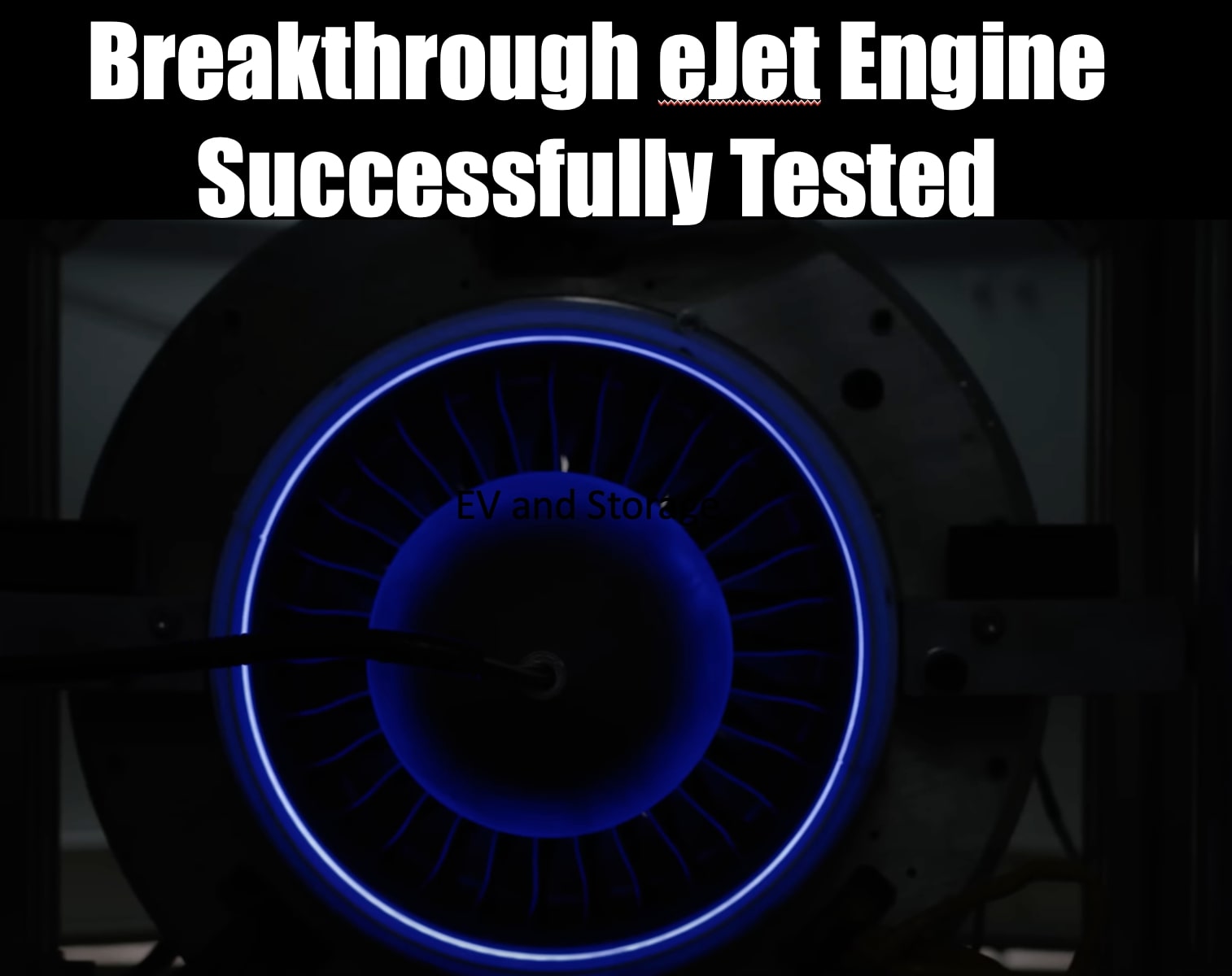The Duxion eJet motor, an electric jet engine will enable electric aviation by using permanent magnet technology to deliver unprecedented power-to-weight ratios within a compact design.
Rim Driven Fan Technology attaches the blades directly to the rim, creating a complete rotor, and moves the electro-mechanical elements to the periphery. The result is a system that is more efficient, quieter, simpler and cheaper.
RDFs provides a boost in thrust, while the motor’s rim distribution enhances torque and cooling efficiency. The lower RPMs and high solidity ratio blades lead to a quieter and more environmentally resilient system. The simplicity of the design also translates to reduced maintenance and certification demands, making RDFs highly scalable and versatile for various aerospace applications.
Duxion’s chairman and CEO, Rick Pilgrim, says that his company is now in the lead regarding the future of electric jet engines.
In 2022, St. John’s, Newfoundland-based Duxion Motors Inc. announced that it has entered into a Memorandum of Understanding (MOU) with Dymond Aerospace Inc. to supply 200 patented eJet motors™ for use in Dymond’s new fleet of 100 unmanned cargo aircraft.
Under the terms of the MOU, Duxion will supply 20 eJet motors™ per year for ten years starting in 2026 for a total purchase of $500 million CAD. Each eJet motor™ will be built using Duxion’s patented technology incorporating a rim-driven motor which utilizes permanent magnet technology in a novel manner to deliver a world class thrust to weight ratio. The eJet motors™ for this application will be capable of producing 8,000+ lbs of thrust, similar to the thrust produced by the engines of 50-passenger CRJ100 aircraft. Each of Dymond’s aircraft will be outfitted with two Duxion eJet motors™, powered by hydrogen fuel cells.

Brian Wang is a Futurist Thought Leader and a popular Science blogger with 1 million readers per month. His blog Nextbigfuture.com is ranked #1 Science News Blog. It covers many disruptive technology and trends including Space, Robotics, Artificial Intelligence, Medicine, Anti-aging Biotechnology, and Nanotechnology.
Known for identifying cutting edge technologies, he is currently a Co-Founder of a startup and fundraiser for high potential early-stage companies. He is the Head of Research for Allocations for deep technology investments and an Angel Investor at Space Angels.
A frequent speaker at corporations, he has been a TEDx speaker, a Singularity University speaker and guest at numerous interviews for radio and podcasts. He is open to public speaking and advising engagements.


Jet engines use the Brayton heat engine thermodynamic cycle. These are ducted fan electric motors.
Open rotors or propellers are more efficient, so this is not good for range limited electric aviation. Ducts to make fans are better for high Mach, and are quieter.
I don’t think “plasma” was mentioned or involved in this article.
These are ducted fans driven by integrated electric motors with fixed magnets. Presumably they are highly efficient.
The crucial thing is how much actual thrust do they provide and what weight of hydrogen will be needed to give what range will the aircraft have and at what speed.
You hit it. Jus WHY is this “eJet” anything at all? It’s not burning any fossil fuel (that is correct, um…right?) then it’s just a ducted fan. (Wouldn’t an e-powered prop be more effective?) And how does in-sucked-air get heated to a plasma? Help me understand. I’m falling and my wings have melted…
Yeah, I used to think electric planes might be the next big thing–then I realized how long the extension cords would have to be.
People! What’s wrong with everyone? I live in Melbourne, where it takes approximately 30 years to travel to any other country by plane. Let’s focus on increasing SPEED and range first.
It’s pretty clear they haven’t solved the rim bearing problem, thus a center shaft with center bearings. Also using a rim drive and using a fixed startor vane segment rather than twin rim drives with counter-rotating fans is interesting to point out. Some of the more recent Safran work on open rotor propfans also seem to be giving up on counter-rotating fans.
I don’t understand what is “jet” about this engine? It is just a fan in a cylinder. Electric fan.
Electric jet engine would be converting oncoming air into heated plasma and throwing out back. Electrically. Not by burning fuel.
You hit it. Jus WHY is this “eJet” anything at all? It’s not burning any fossil fuel (that is correct, um…right?) then it’s just a ducted fan. (Wouldn’t an e-powered prop be more effective?) And how does in-sucked-air get heated to a plasma? Help me understand. I’m falling and my wings have melted…
That is exactly the problem. It is not a jet engine, it is a ducted fan.
You had me up to the hydrogen fuel cells.
The primary barrier to electric aviation is the energy density of batteries and hydrogen systems.
Developments in engines is nice, but don’t address the primary problem.
That’s what I was going to say. The energy density of hydrogen, even liquid hydrogen, in terms of KWH/KG, is really good, but the volumetric density of liquid hydrogen is so low as to be outside the normal experience of people. 70kg per cubic meter, at 14k. That’s in the same general range as styrofoam!
Any airplane relying on LH2 is going to consist mostly of fuel tank!
And, remember, LH2 isn’t a source of energy, because you don’t find it in nature. It’s a way to store energy. A really inconvenient way, given it’s low density and deep cryogenic nature.
You have to MAKE it, using some other source of energy. If you’re going to do that, why wouldn’t you invest a little more work to generate liquid methane? Six times denser, at 112K. Or proceed to butane, 573kg per cubic meter, and 272K? Sure, extra work, but then you could fuel a practically unaltered normal airplane.
Batteries, at present, aren’t even a serious contender. Though if you could get the power density of aluminum/air batteries up a bit, they might be.